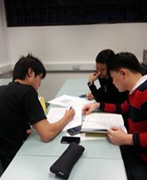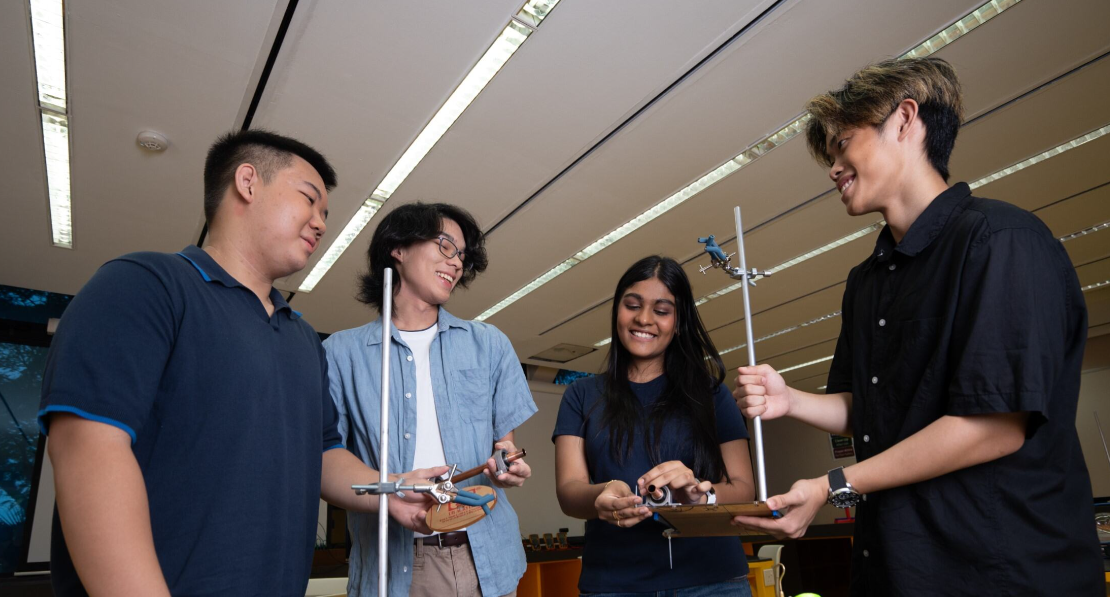
LearningANTS, or Learning Analytics Networked Tutoring System, is an online platform where students can progress through competency levels of a topic, from Beginner to Expert, at their own pace. Hints and solutions are available in LearningANTS, providing extra guidance with every attempt made by the students. Learning gaps can also be diagnosed and additional questions to strengthen foundational knowledge will be automatically recommended by LearningANTS. Personalised dashboards enable students to view a summary of their learning progress, fostering self-regulated and independent learning.
Also via dashboards, lecturers are able to monitor the progress of their students with real-time analytics to identify students’ strengths, weaknesses and misconceptions. This data empowers lecturers to adjust their instructional strategies to better engage students effectively during class.
SP students from Polytechnic Foundation Programme have used LearningANTS for Physics topics (e.g. Kinematics), while SP students from various diploma courses have used LearningANTS for engineering mathematics topics (e.g. Differentiation). Surveys and evaluations conducted with these students indicated that they generally had a good experience and benefited from LearningANTS.
Furthermore, with modules in SP becoming fully flipped, understanding students' video watching habits before tutorials becomes crucial. LearningANTS facilitates this by tracking students' video watching activities and providing valuable insights from video clickstream data. This data allows lecturers to analyze how students engage with video content, identify areas where students may struggle, and adjust their instructional strategies accordingly. By leveraging these insights, lecturers can enhance classroom engagement and ensure a more personalized and effective learning experience for each student.
.png?sfvrsn=52dbc1fa_1)

The Society for Learning Analytics Research (SoLAR, 2011) defines learning analytics as the “measurement, collection, analysis and reporting of data about learners and their contexts, for purposes of understanding and optimizing learning and the environments in which it occurs.” The School of Mathematics & Science consistently undertakes learning analytics initiatives aimed at the enhancement of student education.


As we continuously progress in our teaching methods and resources, we are dedicated to the objective of fostering robust fundamental abilities in mathematics, science, and in the realms of data and analytics among our students to thrive in the evolving landscape of economy and environmental stewardship. Our curriculum is developed using a framework that emphasizes mathematical and scientific reasoning, equipping our students with these critical thinking skills; this includes stimulating student engagement with complex scientific principles through the application of the Predict-Observe-Explain technique in our Physics teachings. Recognizing the growing significance of data and statistics, we also seek to boost our pupils’ understanding of statistics via the statistical literacy initiative. The Common Core Curriculum (CCC) is structured to gear up students for a world marked by rapid changes and unpredictability, with an underlying drive towards sustainability—which we aspire for students to approach with heightened consciousness.

The School of Mathematics and Science began implementing the Flipped Learning approach for math classes in 2014. This method has since been applied to various modules, including Mathematics, Statistics, and IT applications. In this Flipped Learning format, students complete pre-class activities such as watching videos and taking quizzes before attending in-person tutorials, where they clarify doubts and apply what they've learned. Lecturers focus on facilitating discussions rather than simply lecturing. An evaluation showed that students favour this teaching method because it accommodates individual learning paces and abilities.
The School of Mathematics and Science is committed to fostering mathematical and scientific thinking among its students. We utilize the Mathematical and Scientific Thinking Framework (MSTF), derived from Professor Alan H. Schoenfeld's research on problem-solving, metacognition, and sense-making. The framework of is applied as follows:

By employing a backward design approach, we begin with the end educational goals of the framework and then tailor our course materials, tutorials, learning activities, and videos accordingly. A checklist based on best design practices assists us in creating instructional resources and serves as a tool for reviewing and enhancing our module curriculum.
The Statistical Literacy Project (SLP) is an initiative by the School of Mathematics and Science (MS) to support Singapore Polytechnic (SP) institution-wide goal of producing life-, work- and world-ready diploma graduates. The SLP is aimed at training SP students to have the know-how in using data effectively to make informed decisions in their lives, thrive in data-rich workplaces and engage with data to meet the demands of global challenges.
Under the SLP, statistics curricular materials are designed to adopt the recommendations in the Guidelines for Assessment and Instruction in Statistics Education (GAISE) framework:
(1) placing more emphasis on data interpretation,
(2) using software for data analysis, and
(3) reducing the focus on tedious manual mathematical computations.
Specifically, students are trained to apply the statistical problem-solving process to answer statistical-based questions using real-data and present their findings in the form of e-posters.


We adopt the Predict, Observe, Explain (POE) strategy, developed by White and Gunstone in the 1980s, in our Physics lessons. POE aims to uncover individual students’ predictions and their underlying reasoning about specific events. It is particularly effective in science education, especially when demonstrations allow immediate observations.


Singapore Polytechnic
500 Dover Rd Singapore 139651
Last updated: 15 November 2024
© 2024 Singapore PolytechnicBest viewed using latest version of Microsoft Edge, Mozilla Firefox, Safari and Google Chrome.
